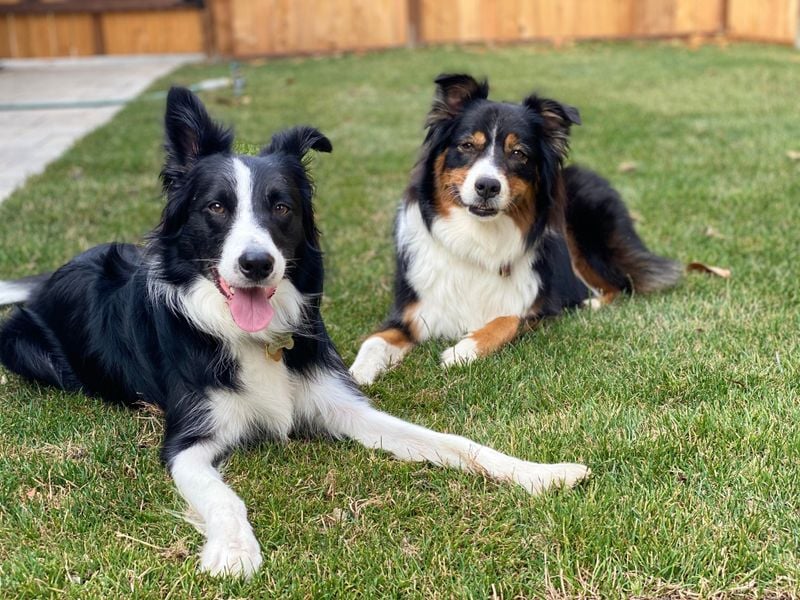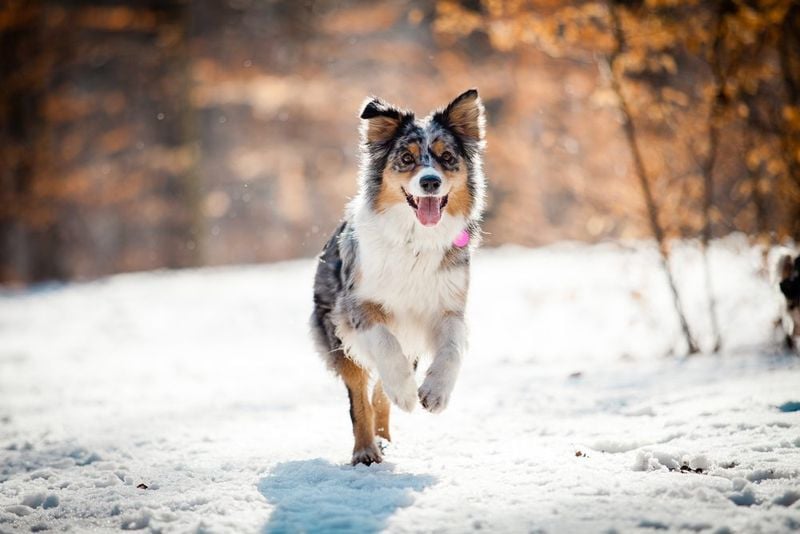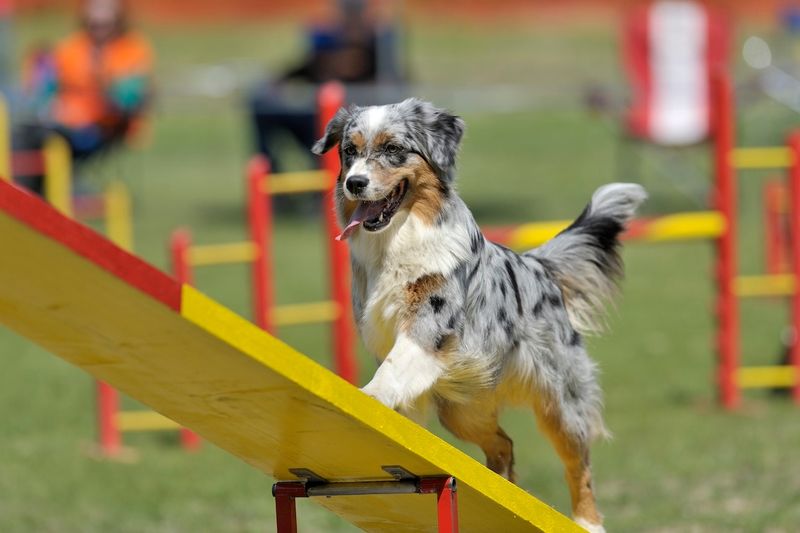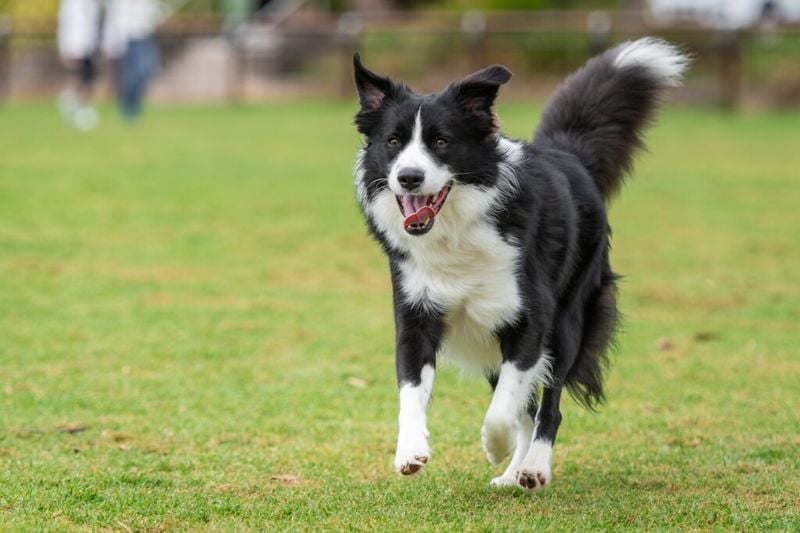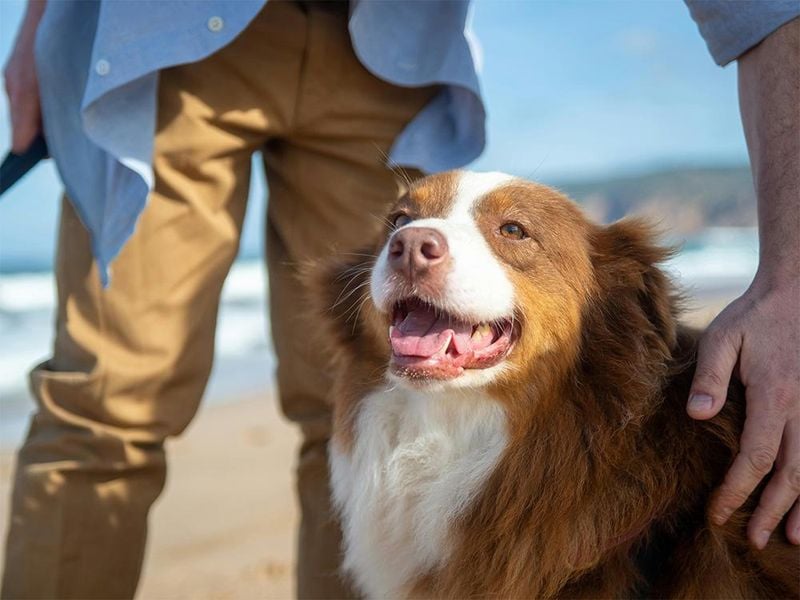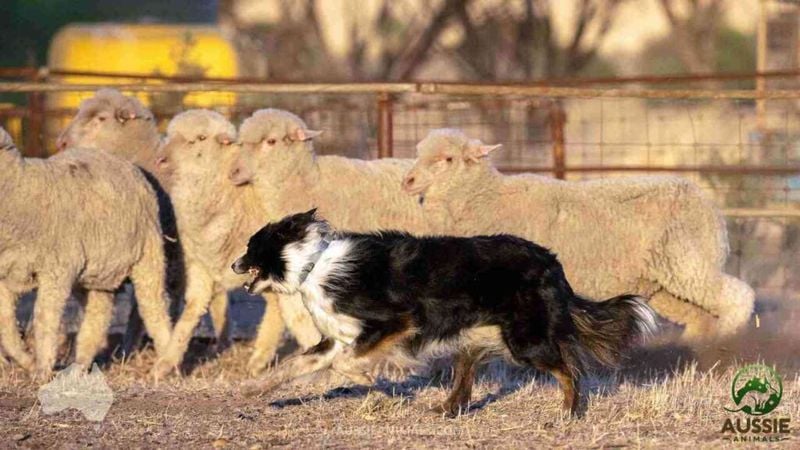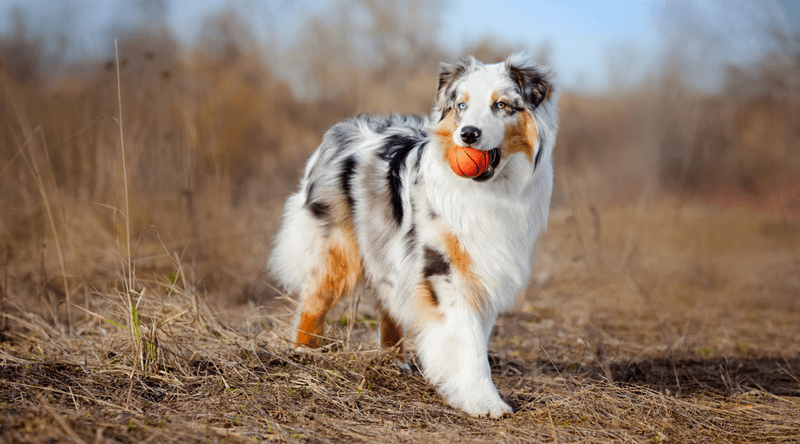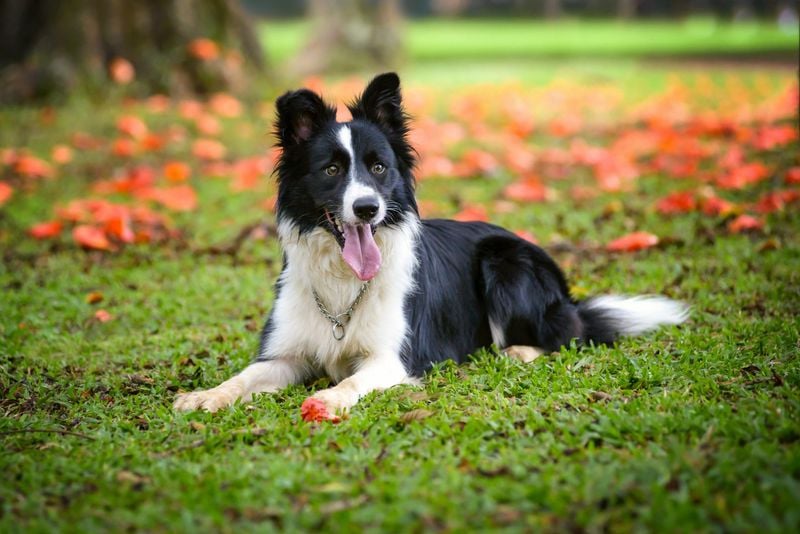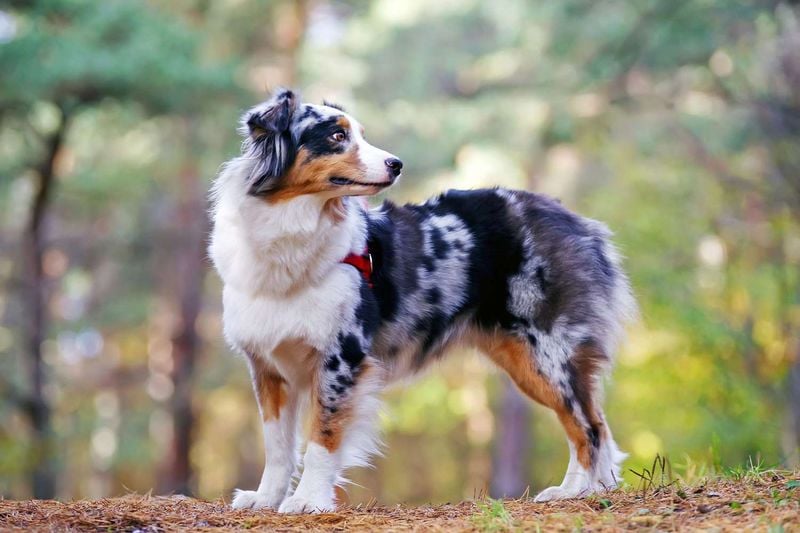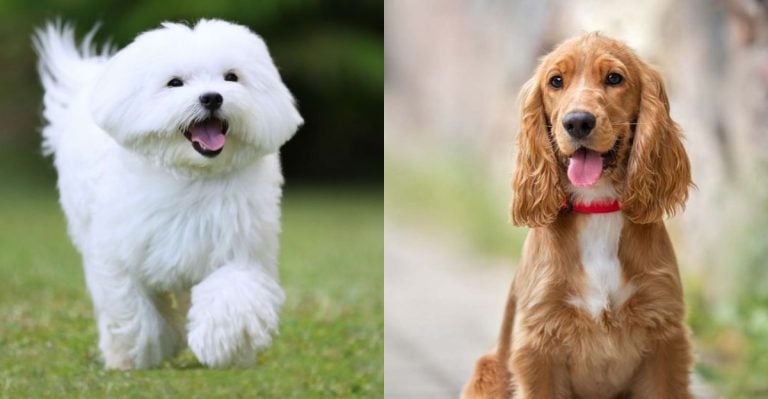Border Collie or Aussie Shepherd? 11 Reasons One Might Be a Better Fit for You
Choosing between a Border Collie and an Australian Shepherd can feel like picking between two star athletes with slightly different skills. Both breeds are smart, energetic, and eager to please, but they have subtle differences that might make one a better match for your lifestyle.
Whether you live on a sprawling farm or in a city apartment, understanding these distinctions will help you find your perfect four-legged companion.
1. Problem-Solving Superstars vs. Structured Learners
Border Collies approach challenges with almost scary intelligence. They’ll analyze a situation, experiment with solutions, and often surprise you with their creative problem-solving. This means they’re excellent at figuring out puzzles, but also at discovering how to open your refrigerator!
Australian Shepherds, while equally brilliant, tend to excel in structured learning environments. They follow directions meticulously and thrive when given clear guidelines. Their intelligence is more about mastering what you teach them rather than inventing new approaches.
Your lifestyle might determine which mental style fits better – do you want a dog that thinks outside the box or one that follows your lead precisely?
2. Training Speed and Style Differences
Border Collies absorb new commands like sponges, often learning complex tasks in just a few repetitions. Their intense focus makes them quick studies, but they can become frustrated if training sessions lack variety or challenge. Many Border owners report their dogs learning commands simply by observing other dogs being trained!
Aussies bring enthusiasm and a strong desire to please to training sessions. They might take a few more repetitions to master a skill, but their consistent eagerness makes the process enjoyable. They’re particularly responsive to positive reinforcement techniques.
Consider whether you prefer a dog that learns lightning-fast but needs constant mental challenges, or one that trains steadily with unwavering enthusiasm.
3. Energy Levels and Exercise Requirements
Border Collies possess seemingly endless energy reserves that need daily outlets. Originally bred to work all day herding sheep across vast landscapes, they typically require 1-2 hours of vigorous exercise daily. Without proper exercise, their pent-up energy can transform into destructive behaviors or anxiety.
Australian Shepherds also need significant exercise, but they’re slightly more adaptable to varying activity levels. They thrive with about 60-90 minutes of daily activity and are more likely to settle down indoors after a good workout.
Your own energy level and available time should guide this choice – both breeds need active owners, but Border Collies typically demand more consistent, intensive exercise.
4. Mental Challenges Keep Boredom at Bay
Border Collies have extraordinary mental stamina that requires daily brain workouts. Without mental challenges, they’ll create their own entertainment – often by redesigning your furniture or landscaping! These dogs excel at complex tasks and can learn vocabulary that rivals a toddler’s.
Australian Shepherds need mental stimulation too, but they’re generally more forgiving if you miss a day of brain games. They enjoy problem-solving but won’t become quite as fixated on mental tasks as Border Collies often do.
If you enjoy teaching tricks, playing strategy games, or participating in dog sports daily, a Border Collie’s intense focus might be perfect. For a slightly more flexible mental exercise routine, an Aussie might be the better match.
5. Personality Traits That Shape Your Relationship
Border Collies typically show a more serious, intense personality focused on work and purpose. They form deep bonds with their owners but might seem aloof with strangers. Their intense stare (the famous “Border Collie eye”) reveals their laser-focused mindset.
Australian Shepherds generally display more social, outgoing temperaments. They’re often described as having a playful “sense of humor” and adapt well to family activities. While still work-oriented, they typically balance work and play more evenly than their Border Collie cousins.
Think about whether you prefer a highly focused, somewhat serious companion or a more socially adaptable dog with a playful streak. Both are loyal, but their approaches to life differ subtly.
6. Velcro Dogs vs. Independent Workers
Australian Shepherds often earn the nickname “velcro dogs” because of their strong desire to be physically close to their owners. They’ll follow you from room to room and may struggle with separation. Their attachment style makes them excellent family companions who want to be involved in everything you do.
Border Collies form equally strong bonds but express it differently. They’re more independent workers by nature, comfortable focusing on a task even at a distance from their owner. While devoted, they might not need constant physical contact to feel secure.
Your preference for personal space matters here – do you want a constant shadow or a dog comfortable with some independence while still maintaining a strong connection?
7. Natural Herding Instincts and Management
Border Collies possess the strongest herding drive of any breed, using their famous “eye” to control livestock with intense staring. This instinct often transfers to moving cars, children, or other pets, requiring consistent training to manage. Their herding style is precise and controlled, developed for the wide-open spaces of the Scottish border country.
Australian Shepherds also have strong herding instincts but typically use a more physical, pushing style rather than the Border Collie’s psychological control. They were developed to work in closer quarters with livestock on American ranches.
Consider your living situation carefully – both breeds may herd children or pets, but Border Collies typically show more intense, difficult-to-redirect herding behaviors.
8. Family Friendliness and Social Adaptability
Australian Shepherds typically adjust more easily to family life with children and other pets. Their playful nature and adaptable temperament help them navigate the chaos of family activities. While they still need proper socialization, they generally have fewer issues integrating into multi-pet households.
Border Collies can be wonderful family dogs but often need more careful management around children and small animals. Their intense herding instincts might lead to nipping at running children’s heels or obsessively stalking smaller pets.
Both breeds can thrive in family settings with proper training, but Aussies generally require less management in typical family situations, making them the easier choice for busy households with young children.
9. Home Sweet Home: Space Requirements
Border Collies flourish in environments with ample space to run and work. Rural properties, farms, or homes with large, secure yards provide ideal settings for their boundless energy. While they can adapt to suburban living, city apartments present significant challenges unless owners commit to extensive daily outings.
Australian Shepherds show slightly more flexibility in their living arrangements. They still need space to move, but with proper exercise, they can adjust to suburban settings more readily than Border Collies. Their somewhat calmer indoor demeanor makes them better candidates for smaller living spaces.
Your home environment should heavily influence your choice – confined spaces without daily access to open areas will likely create behavior problems in both breeds, but especially in Border Collies.
10. Distinctive Looks and Coat Maintenance
Border Collies typically sport a moderate-length double coat that comes in various patterns, with the classic black and white being most recognized. Their build is lighter and more streamlined than Aussies, with males standing 19-22 inches tall. Their grooming needs are moderate – weekly brushing with more frequent care during seasonal shedding.
Australian Shepherds showcase a more varied color palette including merle patterns with striking blue or multicolored eyes. They have a slightly heavier build and more abundant coat that requires more intensive grooming to prevent matting.
Both breeds shed considerably, so neither is ideal for allergy sufferers. Your aesthetic preference and willingness to manage different grooming requirements might help decide which breed better fits your lifestyle.
11. Health Considerations and Lifespan Expectations
Border Collies generally enjoy robust health with an average lifespan of 12-15 years. Their main health concerns include hip dysplasia, epilepsy, and certain eye conditions like Collie Eye Anomaly. Working lines often have fewer health issues than show lines due to breeding focused on function rather than appearance.
Australian Shepherds typically live 12-13 years and face similar health challenges, plus increased risks of hereditary deafness and the MDR1 gene mutation, which causes sensitivity to certain medications. The merle coloring gene, while beautiful, can create health issues when two merle dogs are bred together.
Both breeds benefit from health testing of parents, but Aussies require slightly more specific genetic screening due to their color-related health risks.


